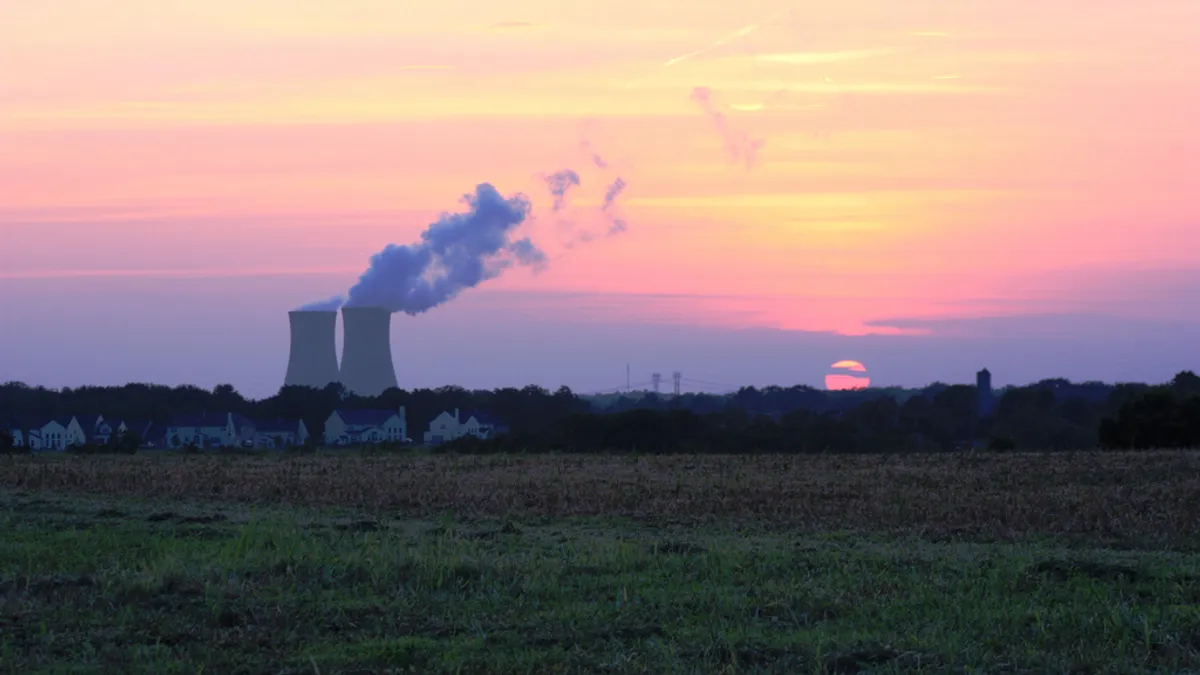Dive Brief:
- The U.S. Supreme Court's decision to stay the Clean Power Plan has injected uncertainty into the nuclear industry, which will now have to shift course in planning for what the grid will look like in the near future, the Pittsburgh Post-Gazette reports.
- The carbon-free energy generated by nuclear plants will be necessary to meet the new regulations when they go into effect, according to Electric Power Research Institute's Director of Strategic Programs, Tina Taylor. The alternative is about $100 billion in investment, she said.
- In some areas of the country, cheap natural gas and skyrocketing operating costs have pressured nuclear facilities to close down ahead of their license expirations.
Dive Insight:
The Clean Power Plan put nuclear generation in a bit of an awkward spot – not really incentivizing new development, but leaning on the existing plants. But at a time when plants are being challenged by cheap natural gas and high operating costs, which has led some utilities to shutter some facilities prematurely or mull that possibility, the plan sends a mixed message.
"Prior to a week ago, the big question we’ve been asking is what does the energy system look like to meet the Clean Power Plan,” EPRI's Taylor said at the Platt’s Nuclear Energy Conference in Washington D.C., the news outlet reported. Meeting CPP goals without nuclear, she said, would cost the United States $100 billion.
Exelon Corp.'s David Brown, senior vice president of government affairs, also spoke at the conference. "It’s imperative to remember that if you care about the climate, if you believe we need to make significant progress there, it’s the electric sector that’s going to carry the load. ... We will need to decarbonize and it’s going to be nuclear that carries the bulk of that.”
A report last year from Third Way, a moderate think tank, showed nuclear generation is needed to meet new regulations and a move away from the clean generation could spike emissions levels.
Exelon has signaled it would like to close several plants, including its Quad Cities nuclear facility because of changes to market rules in PJM Interconnection. The 1,800 MW plant has struggled to compete with lower-priced gas-fired power.
In New York, Entergy is planning to close the James A. FitzPatrick plant despite pleas from the state to keep it running.
Last year, New York Gov. Andrew Cuomo (D) asked state regulators to work on ensuring markets and policies that would keep the state's nuclear industry afloat. But according to Entergy, it was standing firm on its decision to shutter the James A. FitzPatrick plant.
"We have explored every legitimate commercial arrangement that might have changed the decision regarding FitzPatrick's retirement. There is no viable alternative left to consider," Entergy spokeswoman Tammy Holden said in December.















